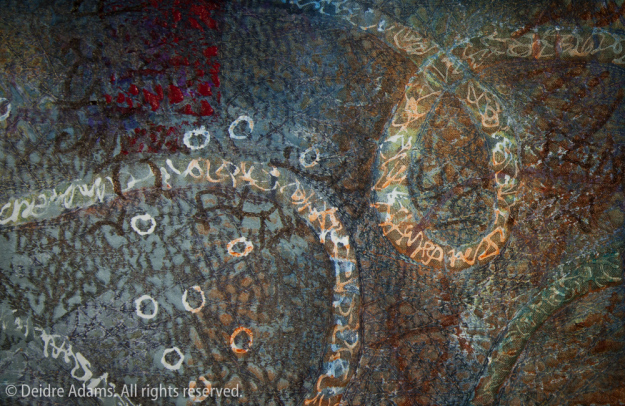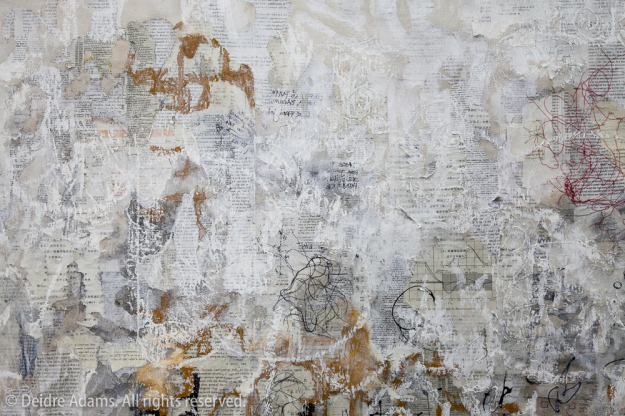Agnes Martin on self-expression
 Detail from Façade VIII, acrylic paint on stitched textile, ©Deidre Adams
Detail from Façade VIII, acrylic paint on stitched textile, ©Deidre Adams
Agnes Martin, notes from lecture at the Institute of Contemporary Art, University of Pennsylvania, February 14, 1973. From Agnes Martin: Paintings, Writings, Remembrances by Arne Glimcher.
Work is self-expression. We must not think of self-expression as something we may do or something we may not do. Self-expression is inevitable. In your work, in the way that you do your work and in the results of your work, your self is expressed. Behind and before self-expression is a developing awareness I will also call ‘the work.’ It is the most important part of the work. There is the work in our minds, the work in our hands and the work as a result.
In your work, in everyone’s work, in the work of the world, the work that reminds us of pride is gradually abandoned. Having in moments of perfection enjoyed freedom from pride, we know that that is what we want. With this knowing we recognize and eliminate expression of pride.
…My interest and yours is art work, works of art, every smallest work of art and every kind of art work. We are very interested, dedicated in fact. There is no half way with art. We wake up thinking about it and we go to sleep thinking about it.
We go everywhere looking for it both artists and non-artists. It is very mysterious the fast hold that it has upon us considering how little we know about it. We do not even understand our own response to our own work.








